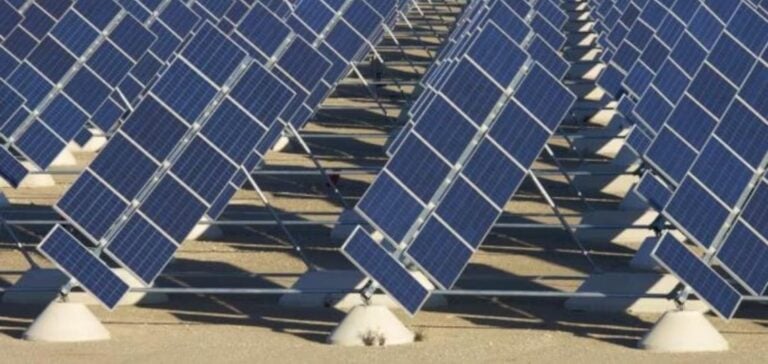The recent launch of a 20 MW solar photovoltaic plant by Solarcentury Africa and Sino Energy in Namibia represents a major step forward for renewable energy in Southern Africa. This unique installation relies on a direct electricity sales model, without the support of long-term purchase agreements (PPA) or sovereign guarantees, a challenging and bold choice in an energy market often dependent on such state support.
Energy Context in Southern Africa
In the Southern Africa region, hydropower and coal traditionally dominate the energy mix, but environmental challenges, such as recurring droughts, complicate hydropower production. Additionally, the pressure to reduce carbon emissions to meet international commitments places added strain on governments to diversify their energy sources and limit coal usage, a polluting energy source.
The Solarcentury Africa solar plant is thus positioned to fill these energy supply gaps. This installation offers a stable energy source unaffected by the climatic challenges impacting hydropower, while aligning with the environmental commitments made by the countries in the region.
Financial Model and Support from Strategic Partners
Financially, the project is supported by Solarcentury Africa and Sino Energy, with assistance from GreenCo, an energy market player specializing in energy contract aggregation and negotiation. GreenCo, in partnership with the U.S. Development Finance Corporation (DFC), aims to enhance energy market resilience in Southern Africa by promoting renewable projects that operate without direct reliance on state guarantees.
This direct sales model allows the plant to sell the produced electricity directly on the Southern African Power Pool (SAPP), a regional energy market, thus providing a new flexibility in renewable energy distribution in Southern Africa. This merchant model reduces dependency on traditional PPAs, allowing investors to diversify revenue streams and mitigate risks associated with state consumers.
Economic Impact for Namibia and the Region
By connecting to the SAPP, this solar plant strengthens not only Namibia’s energy resilience but also that of the entire region, particularly by providing the capacity to quickly respond to demand fluctuations. In Namibia, this fully merchant model, without predefined sales contracts, opens avenues for other similar projects in the renewable energy sector. The economic implications are significant, not only in terms of local job creation but also in attracting new investors to a market where state support is often crucial.
This project contributes to economic stability by increasing renewable electricity production while meeting the energy needs of a growing population and a developing economy. Namibia could also become an example for other countries in the region, demonstrating how an approach independent of public financing can attract private capital and thus support innovation in the energy sector.
Prospects for Solar Energy in Southern Africa
The Southern African Power Pool, active since 1995, promotes energy integration among member countries. With climatic conditions favoring solar power, Southern Africa, particularly Namibia, has high potential for this type of energy project. The Solarcentury project could also encourage international investors, paving the way for new energy initiatives of this type in the region.
As Southern Africa grapples with the impact of hydropower variability and seeks to reduce coal reliance, renewable energies like solar are emerging as sustainable and necessary solutions. This merchant and subsidy-independent model could well transform the dynamics of energy production and consumption in Southern Africa.






















